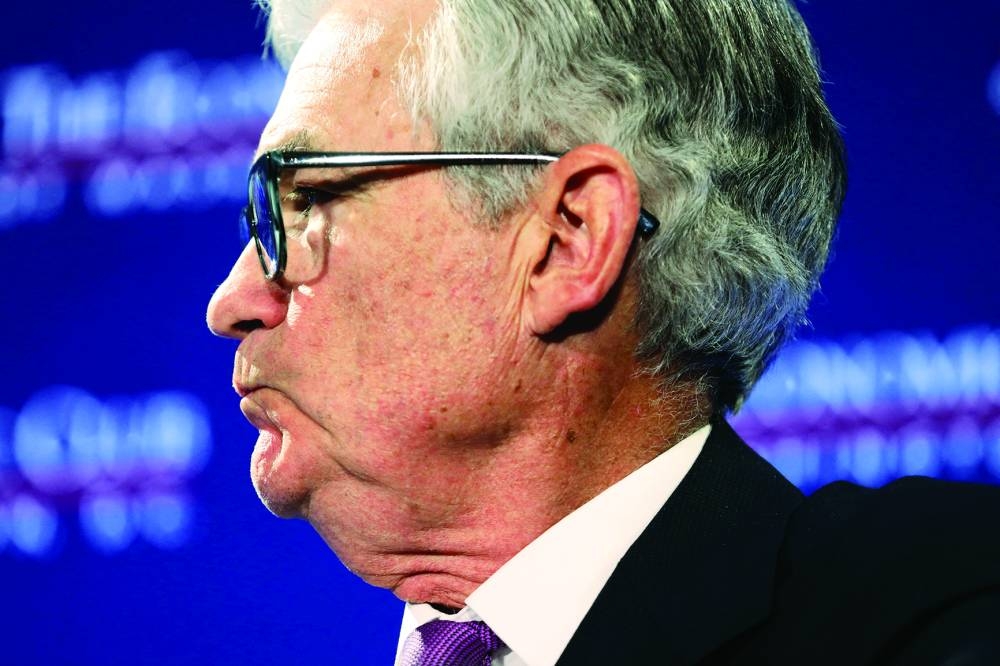The US economy’s strength and continued tight labour markets could warrant further Federal Reserve interest rate increases, Fed Chair Jerome Powell said on Thursday in remarks that appeared to push back against market expectations that the US central bank’s rate hikes had reached an end.
“We are attentive to recent data showing the resilience of economic growth and demand for labour. Additional evidence of persistently above-trend growth, or that tightness in the labour market is no longer easing, could put further progress on inflation at risk and could warrant further tightening of monetary policy,” Powell said in remarks to the Economic Club of New York.
For inflation to durably return to the Fed’s 2% target, it “is likely to require a period of below-trend growth and some further softening in labour market conditions,” Powell said.
Since the Fed began raising interest rates in March of 2022 the unemployment rate has varied little from the current 3.8%, below the level most Fed officials feel is noninflationary, and overall economic growth has generally remained above the 1.8% annual growth rate Fed officials see as the economy’s underlying potential.
The Fed is “proceeding carefully” in evaluating the need for any further rate increases, Powell said, likely leaving intact current expectations that the Fed will leave its benchmark policy rate steady at the current 5.25% to 5.5% range at the upcoming October 31-November 1 meeting.
There is evidence the labour market is cooling, Powell said, with some important measures approaching levels seen even before the pandemic.
Powell also noted a number of fresh “uncertainties and risks” that need to be accounted for as the Fed tries to balance the threat of allowing inflation to rekindle against the threat of leaning on the economy more than is necessary.
“Our institutional role at the Federal Reserve is to monitor these developments for their economic implications, which remain highly uncertain,” Powell said. He also noted recent market-driven increases in bond yields that have helped to “significantly” tighten overall financial conditions.
“Persistent changes in financial conditions can have implications for the path of monetary policy,” Powell said, with higher market-based interest rates, if sustained, doing the same job as Fed rate increases. But the Fed chair also voiced what has become a lingering theme at the US central bank: That despite steady progress on lowering inflation, the battle isn’t over, with further rate increases still a possibility and the duration of tight monetary conditions still to be determined.
“Inflation is still too high, and a few months of good data are only the beginning of what it will take to build confidence that inflation is moving down sustainably toward our goal,” Powell said, citing the progress made since inflation peaked last year but also noting that one of the Fed’s main measures of inflation remained at 3.7% through September, nearly twice the central bank’s target.
“We cannot yet know how long these lower readings will persist, or where inflation will settle over coming quarters,” Powell said. “The path is likely to be bumpy and take some time...My colleagues and I are united in our commitment to bringing inflation down sustainably to 2%.”
The weeks since the Fed’s September meeting have been unusually turbulent, with worries about a regional conflict in the Middle East rising and bond markets driving market interest rates higher, tightening the financial conditions faced by businesses and households somewhat independent of the Fed.
Data since the Fed’s last meeting also has shown US job growth reaccelerating unexpectedly, retail sales defying predictions of a slowdown and varying measures of prices offering inconsistent signals about whether inflation is on track to return to the Fed’s 2% target in a timely manner.
Powell’s appearance comes less than 48 hours before the beginning of the traditional quiet period ahead of the rate-setting Federal Open Market Committee’s meeting on October 31-November
Should they leave rates unchanged in two weeks as is now widely expected, it would mark the first back-to-back meetings with no rate increase since the Fed kicked off its hiking campaign in March 2022.

The US economy’s strength and continued tight labour markets could warrant further Federal Reserve interest rate increases, Fed Chair Jerome Powell said on Thursday in remarks that appeared to push back against market expectations that the US central bank’s rate hikes had reached an end.
